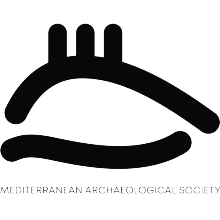Circiter tertia parte ponderis (Vitruve 2, 5), the existence of an hydraulic lime in the Roman architecture. In his treaty on architecture, Vitruve (2, 5) explains how to make lime from a particular limestone. In 2, 5, 3, he indicates that during lime calcination, the limestone lost a third of its weight [circiter tertia parte ponderis]. One deducts that the original limestone contains 20% of silicates and the lime thus obtained is of medium hydraulicity. Vitruve recommends for the construction of walls to use a lime made from a compact and rather hard siliceous limestone [ex spisso et duriore], what implies the hydraulic character required for such an usage. For coatings [in tectoriis], the lime hardens by air and is made from porous stone [ex fistuloso].
(EL)
Circiter tertia parte ponderis (Vitruve 2, 5), the existence of an hydraulic lime in the Roman architecture. In his treaty on architecture, Vitruve (2, 5) explains how to make lime from a particular limestone. In 2, 5, 3, he indicates that during lime calcination, the limestone lost a third of its weight [circiter tertia parte ponderis]. One deducts that the original limestone contains 20% of silicates and the lime thus obtained is of medium hydraulicity. Vitruve recommends for the construction of walls to use a lime made from a compact and rather hard siliceous limestone [ex spisso et duriore], what implies the hydraulic character required for such an usage. For coatings [in tectoriis], the lime hardens by air and is made from porous stone [ex fistuloso].
(EN)
Circiter tertia parte ponderis (Vitruve 2, 5), the existence of an hydraulic lime in the Roman architecture. In his treaty on architecture, Vitruve (2, 5) explains how to make lime from a particular limestone. In 2, 5, 3, he indicates that during lime calcination, the limestone lost a third of its weight [circiter tertia parte ponderis]. One deducts that the original limestone contains 20% of silicates and the lime thus obtained is of medium hydraulicity. Vitruve recommends for the construction of walls to use a lime made from a compact and rather hard siliceous limestone [ex spisso et duriore], what implies the hydraulic character required for such an usage. For coatings [in tectoriis], the lime hardens by air and is made from porous stone [ex fistuloso].
(FR)
 Μεσογειακή Αρχαιολογική Εταιρεία
Μεσογειακή Αρχαιολογική Εταιρεία

